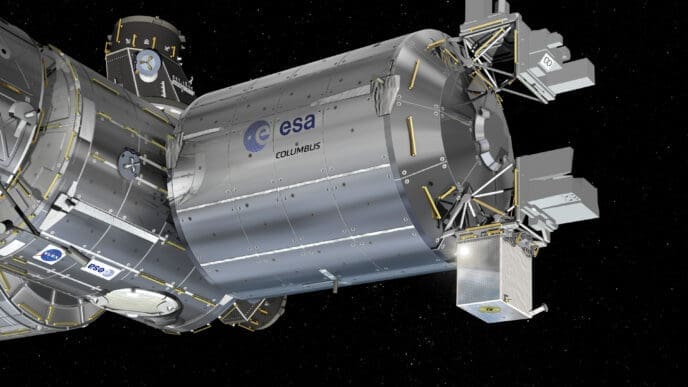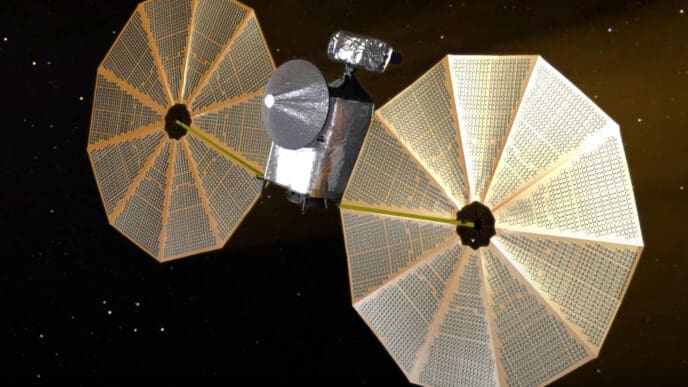Recent observations reveal two massive thunderstorms swirling in Jupiter’s South Equatorial Belt (SEB), which might dramatically alter its appearance.
Captured by astrophotographer Michael Karrer on November 30, using an 8-inch Celestron telescope, these storms are distinct white patches nestled within one of Jupiter’s prominent reddish-brown belts. Experts predict these giant storms could unleash massive bolts of green lightning due to the planet’s unique atmospheric conditions.
John Rogers, an astronomer at the British Astronomical Association, noted that such storms were last witnessed eight years ago. The storms could be profound enough to absorb Earth entirely given their size, reaching depths of nearly 60 miles beneath Jupiter’s swirling surface. However, they are not expected to endure as long as the Great Red Spot due to their structure, causing them to disperse over time. As they do, their hues blend with the SEB’s brown clouds, potentially diluting the belt’s rust-red color.
Historically, the SEB has undergone such transformations. In instances from 1973 to 1991 and briefly in 2010, the SEB nearly vanished due to similar storm-induced color changes. While it’s uncertain if the current activity will lead to a complete disappearance, the phenomena have sparked interest and speculation among researchers.
Jovian lightning, distinct from Earth’s due to atmospheric ammonia, takes on a noticeable green shade. NASA’s data highlights this atmospheric peculiarity, adding another layer of intrigue to the storms. Jupiter, recently positioned at opposition, presents a vibrant spectacle in the night sky, offering an observable target for both amateur astronomers and photography enthusiasts looking for exciting celestial events.
Jupiter’s thunderstorms derive power from convection within its clouds, akin to those on Earth, though differing in visual characteristics. This activity coincides with Jupiter’s current opposition, making it especially bright and visible from Earth, particularly within the Taurus constellation.
The dynamic weather patterns of Jupiter underscore the planet’s complex climatic systems, providing valuable insights into atmospheric science and celestial dynamics. While the ultimate impact of these storms on Jupiter’s appearance is uncertain, they add an intriguing chapter to our understanding of the gas giant’s atmospheric behavior.
Source: Space












